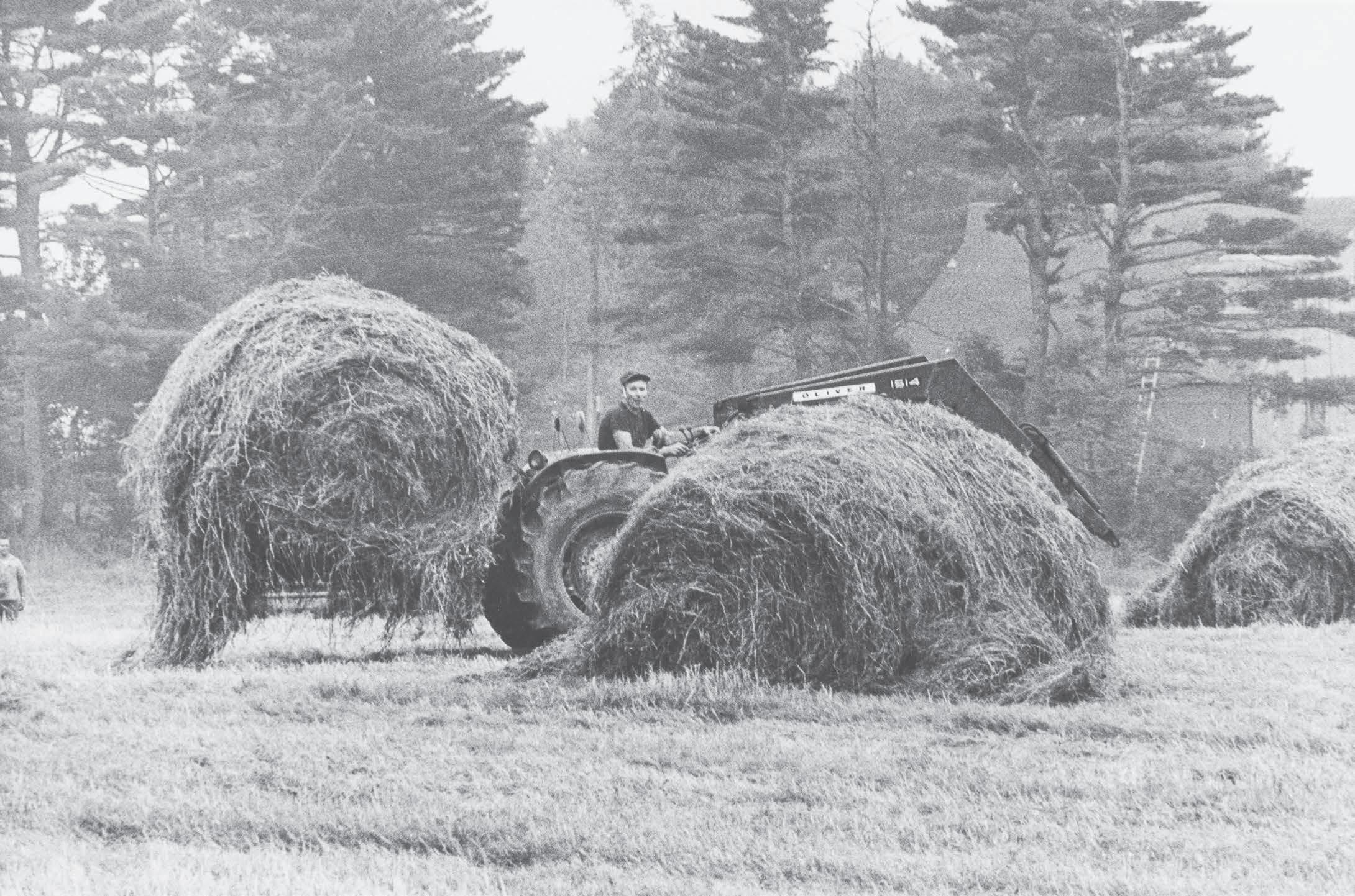
4 minute read
New Management
from Eleanor Houston Smith and Lawrence M.C. Smith: Pioneers in Organic Agriculture at Wolfe's Neck Farm
IN THE MID-1960S the Smiths realized that the farm would move ahead best with professional management.
LMC conducted an international search for about two years for the best person, and found Charles DeGrandpre not far away, managing Alfalfa Farm, its iconic pair of blue silos a landmark on Route 95 in Topsfield, Massachusetts. DeGrandpre had his own direct experience with pioneers in organic agriculture. His first job after Essex County Agricultural School and wartime service in the Navy had been managing the Saracen farm of Barclay Warburton in Ipswich, Massachusetts. A Harvard graduate of a socially prominent family, Warburton had connections to the most famous of organic farming pioneers in England—Friend Sykes and Lady Eve Balfour. Inspired by Sir Albert Howard in India, as Louis Bromfield had been in America, the two along with Howard were widely considered the leaders of the early worldwide organic movement in the 1940s. DeGrandpre met both Sykes and Balfour when they came to visit Saracen Farm. Warburton and DeGrandpre used their organic methods and bought seed from England.
Advertisement
DeGrandpre, his wife Claire, and four boys ages 16, 15, 13, and 12 came to Wolfe’s Neck Farm in October, 1968. DeGrandpre’s self-deprecating and low-key manner, coming with great competence and an extraordinary commitment to whatever hard work was required, was the perfect fit for Maine, for the farm, and for the Smith family. He was known as simply, Charlie. He and his wife, Claire, and his boys—Richard, David, Jim, and Chuck— were a farm family, and all got involved in the work, at all times of day and night, their farmhouse at Little River both farm office and home.
The Smiths and the DeGrandpres began to build on the organic practices in place and make way for the new. The quality of the grass-fed beef was improved by further enriching the soil with high quality seed mixtures, cover crops, and heavy doses of hen manure. The fields became rich in clover, the best for drawing nitrogen from the air. Charlie himself created the organic, nutritional mix of the small amounts of grain used for heifers and for the adult animals going to market. It included kelp from the sea, and dried blood he went to Massachusetts himself to get.
LMC and Charlie developed a breeding program to produce better animals. They experimented with cross breeding Charolais and Hereford breeds with the Black Angus. DeGrandpre also improved the marketing of the frozen beef. The farm began to sell more locally and at the same time develop markets accessible by truck. Charlie and Claire would drive themselves twice monthly with the frozen product to organic food cooperatives and the growing number of individuals looking for organic meat around New England. Claire organized the orders and the tours.
The local veterinarian Dr. Russell Pinfold would consult on the phone and help from time to time, but with healthy animals and Charlie’s expertise, vet bills seldom went beyond $50 to $100 a year. Charlie and his boys could also fix the machinery, the almost fantastical mix of trucks and tractors, some European, some literally homemade of various parts, the legacy of Mr. Smith’s love of old cars, of economizing, and making do. Charlie added some modern, American-made vehicles; easier to get parts.
But the biggest step forward was the purchase of the first machine in the state of Maine to harvest hay in huge, round rolls. In addition to feeding the cattle at bunkers twice a day with green chop, a cadre of farm workers in the summer were putting up small, square bales of hay for winter feed, an improvement on the trench silos. But haying and stacking with square bales was labor intensive and seemed antiquated to Mr. Smith. He found the solution at a trade show a round baler only one year on the market. He bought it and put it to work. It was featured in a major spread in the August 10, 1973, issue of the Maine Times.

Charlie’s son Jim said the change was dramatic; one man could put up more than three times the hay in round bales rather than square. Once again ingenuity was required. The machine was so ahead of its time that there was no accompanying device to get these big bales into the barn. DeGrandpre went to his machine shop and designed a two-pronged device for the front of the tractor and a spear on the back so that he and his helpers could move two bales at a time into the barns. Many hours of labor were saved. LMC was once again looking at a larger impact. “I hope this new concept in farming will interest others,” he said. This first baler needed improvements; the hay was wound too loosely and not tied. But a better machine was only a few years away and it changed the way this farm and others operated in a profound way.
In the late 1970s, Charlie created a rotational grazing system. Once the grass had been eaten down to 4 inches, the cattle were moved to another field, allowing the first to grow back to 8 inches. They were always getting the most nutritious buds of the grass; It is a system widely used today but new at the time. DeGrandpre put fencing on wheels so fields could be refigured easily. He also created ways to move the water the cattle needed on wheels from field to field. (One animal requires about 30 gallons a day.) The system was innovative and attracted attention and visitors eager to learn. Among them, Jim DeGrandpre remembers, were Peggy and David Rockefeller who were developing their own organic farm on Mt. Desert Island; they came and stayed for three days to learn the various methods Charlie was using.








